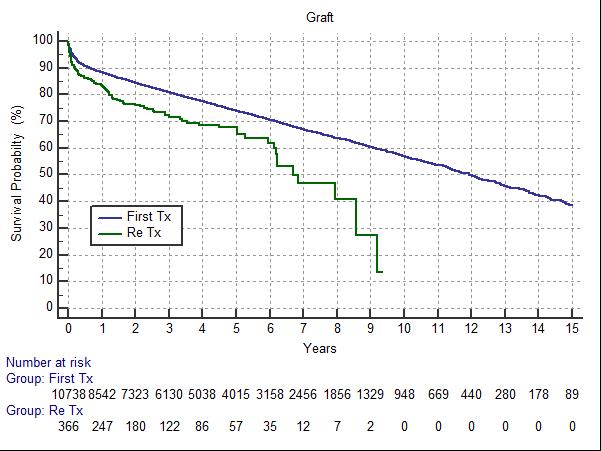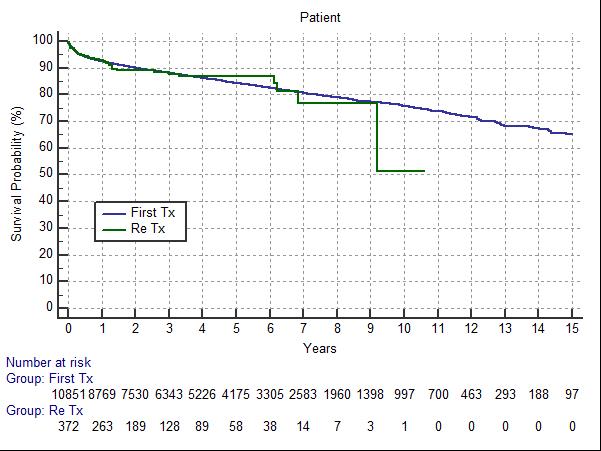Results of Kidney Transplantation and Re Transplantation in Argentina 1998-2016
Liliana Bisigniano1, Viviana Tagliafichi1, Daniela Hansen Krogh2, Maria del Carmen Bacque3.
1Scientific and Technical Direction, INCUCAI, Buenos Aires, Argentina; 2Systems Direction, INCUCAI, Buenos Aires, Argentina; 3Presidence, INCUCAI, Buenos Aires, Argentina
Objective: To assess variables related to both patient and graft survival after kidney transplantation and retransplantation, using cadaveric donors and related living donors, in Argentina in the last 19 years.
Material and Methods: Patients included in waiting list (WL) for kidney transplant between January 1, 1998 and June 30, 2016. The information was obtained from SINTRA. The results are reported as a percentage in categorical variables and median values for the numerical variables.
A Kaplan Meir curve was used to estimate survival rates.
Results: 12640patients undergoing transplant were assessed; 435 (3.4%) underwent a second transplant (ReTx). The etiologies of the transplant patients were in table 1.

Median age of the recipient at the time of transplantation was 41.78, and 37.51 at ReTx. 57% of patients were male in both groups.
Median time expressed in years on WL at the time of transplantation was 1.45, and 1.03 at ReTx; and the median time on dialysis expressed in years at the time of transplantation was 4.38, and 3.53 at ReTx.
Both the patient and graft survival rates appear in the graph 1 and 2


Comparison of survival curves (log-rank test)P < 0.0001, considering a randomized group at the time of the first transplant.
The findings reported for graft loss show that chronic nephropathy is the most common cause in both cases that is showing in table 2.

PRA is statistically significant for graft loss in the multivariate analysis, p=0.0344 HR: 1.26, CI 95% 1.02to 1.57.
The post tx induction percentage was 71% and 79% for Retx. Timoglobuline accounted for 62% in the first case and 82% in the second case.
The median PRA was 12 in Tx and 33 for Retx.
Conclusions: Although the median age and time on dialysis among re-transplant patients are lower as compared to patients undergoing transplant for the first time, the highest immunological risk in retransplanation (represented by PRA)has a negative impact on graft survival.
Patient´s age and time on dialysis at the time of transplant has a negative impact on patient survival in both groups.
